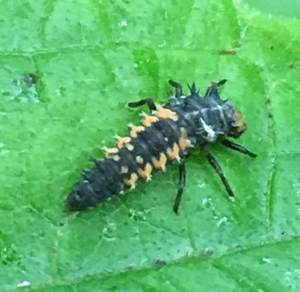Eric Duran
Head Naturalist
Twice a year, once in the Spring and once in the Fall, we try to count all of the living wild species of plants, animals, slime molds, and fungi that we can in Russ Pitman Park.
This counting of species is referred to as a “Bio-blitz”. Its an important part of understanding the life at the Nature Center, and how it may be changing over time. We want to be able to answer questions about population trends, introduced non-native species, and general biodiversity.
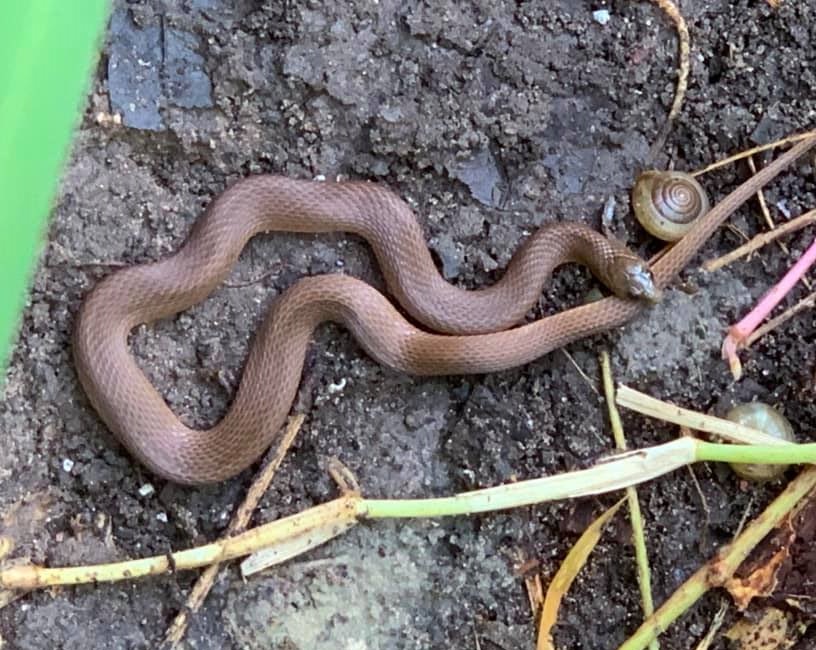
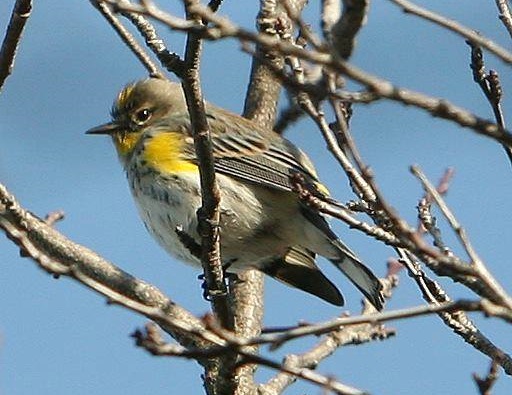
Our staff naturalists conduct this count, along with volunteer naturalists and biologists. For many institutions, a Bio-blitz is just one day, but we have a limited staff and relatively small volunteer corps, so our bio-blitzes usually last for about 2 weeks. As a practice, we like to enter much of our observations into E-Bird and iNaturalist, so that our data is accessible to biologists around the world and through time, going forward. That we, our local data can become part of big picture scientific data.
This was a really successful Fall BioBlitz!
This year, we counted 361 total species, which beat last year’s Fall Bio-blitz count of 340. The relatively warm weather and recent rains helped with counting so many species.
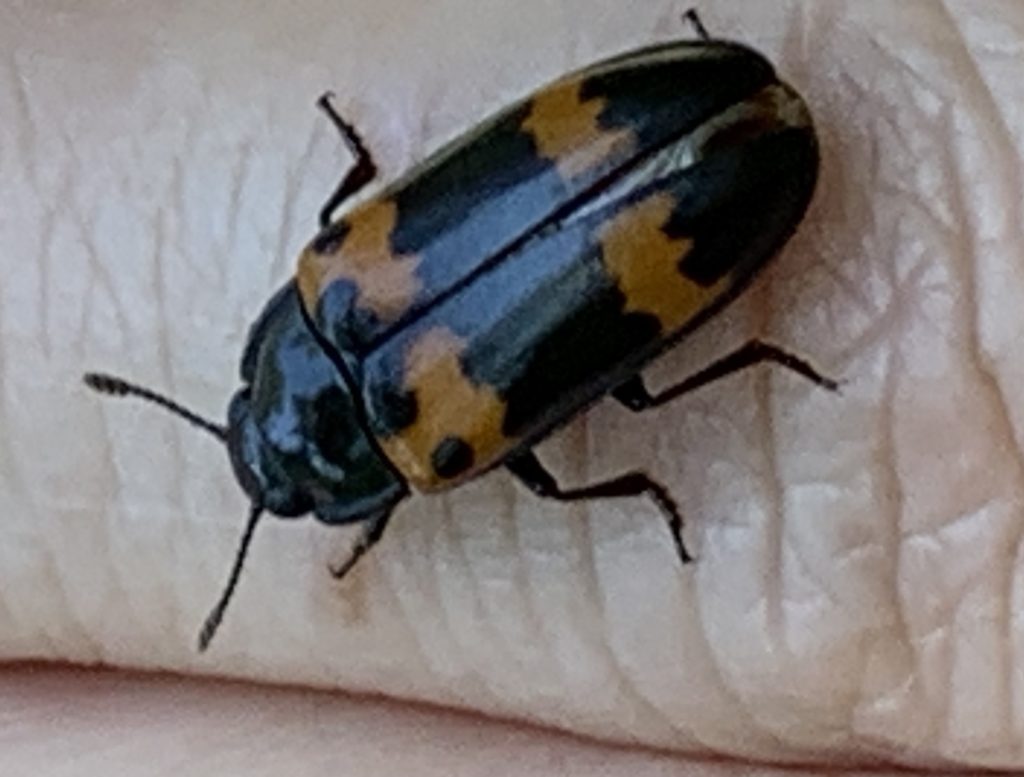
As with most of the counts we do, we found a few new species for the park (at least as far as we know from records). Florida Oakgall Borer Moth, Red-banded Fungus Beetle, and newly encountered species of light colored Russula mushroom all made an appearance for us… all species that we have no record of being in the park before. This is always thrilling for our naturalists!
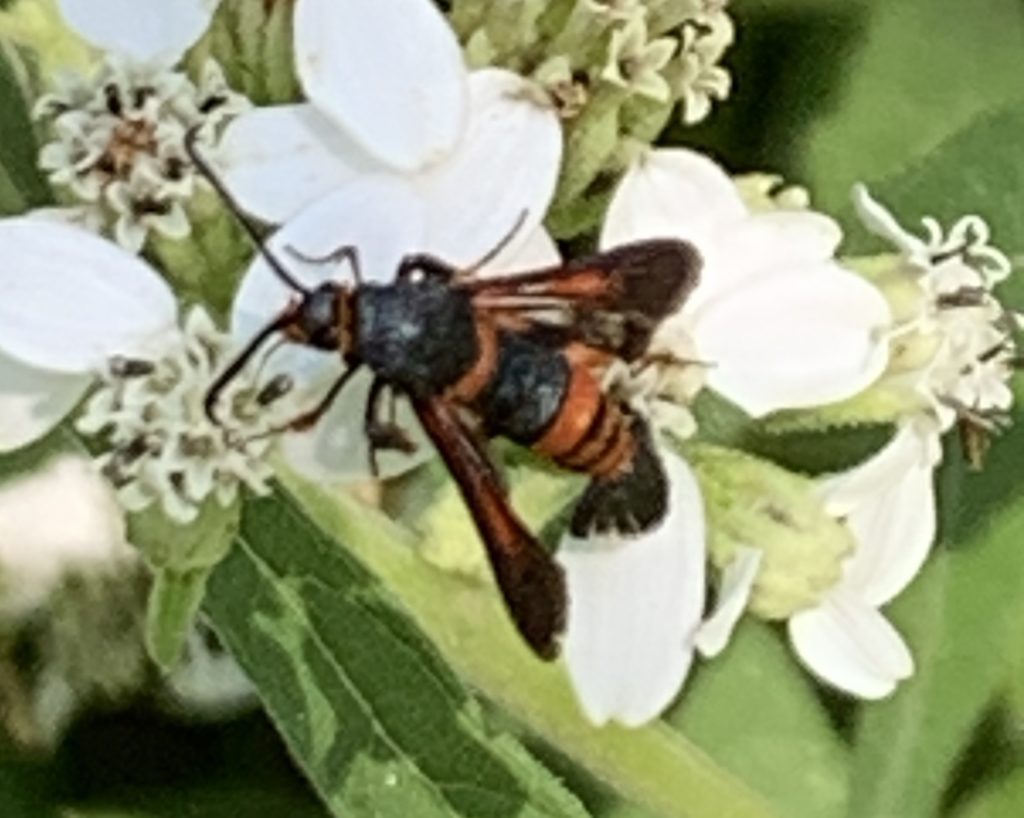
It usually takes 2-4 weeks to get all of the species, that we photographed, identified, so that we can compile an accurate count. As far as we know at this, time, we’ve IDed everything we can, and we are ready to present to you the final version of the Fall 2021 Bio-blitz for the Nature Discovery Center in Russ Pitman Park!
If you have any questions, feel free to email me at eduran@naturediscoverycenter.org.
Thank you!
Yellow-rumped Warbler photo – Nature Discovery Center – All Rights Reserved.
All other photos by Eric Duran. CC BY-SA – Some rights reserved.
*************************************************************
RUSS PITMAN PARK FALL 2021 BIOBLITZ (10/6 – 10/22)
ALL SPECIES: (361)
ANIMALS: (167)
VERTEBRATES: (41)
INVERTEBRATES: (126)
FUNGI: (40)
SLIME MOLDS: (2)
PLANTS: (152)
******************************
Mammals: (4)
Gray Squirrel – Sciurus carolinensis
Fox Squirrel – Sciurus niger
Raccoon – Procyon lotor
Virginia Opossum – Didelphis virginiana
Birds: (27)
Black-bellied Whistling Duck – Dendrocygna autumnalis
White Ibis – Eudocimus albus
Downy Woodpecker – Picoides pubescens
Red-bellied Woodpecker – Melanerpes carolinus
Yellow-bellied Sapsucker – Sphyrapicus varius
Monk Parakeet – Myiopsitta monachus
Cooper’s Hawk – Accipiter cooperii
Turkey Vulture – Cathartes aura
Ruby-throated Hummingbird – Archilochus colibris
Rufous Hummingbird – Selasphorus rufus
Chimney Swift – Chaetura pelagica
White-winged Dove – Zenaida asiatica
Northern Cardinal – Cardinalis cardinalis
Blue Jay – Cyanocitta cristata
Carolina Chickadee – Poecile carolinensis
Tufted Titmouse – Baeolophus bicolor
American Robin – Turdus migratorius
Hermit Thrush – Catharus gutttatus
Black & White Warbler – Mniotilta varia
American Redstart – Setophaga ruticilla
Wilson’s Warbler – Cardellina pusilla
Yellow-rumped Warbler – Setophaga coronata
Northern Mockingbird – Mimus polyglottus
Eastern Wood-Peewee – Contopus virens
Great Crested Flycatcher – Myiarchus crinitus
Blue-gray Gnatcatcher – Polioptila caerulea
Baltimore Oriole – Icterus galbula
Reptiles: (5)
Three-toed Box Turtle – Terrapene Carolina
Red-eared Slider – Trachemys scripta elegans
Green Anole – Anolis carolinensis
Cuban Brown Anole – Anolis sagrei
Rough Earth Snake – Haldea striulata
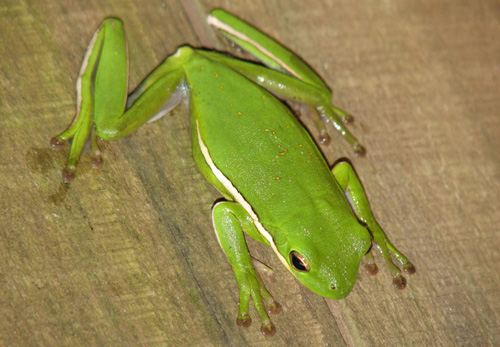
Amphibians: (3)
Gulf Coast Toad – Incilius nebulifer
Rio Grande Chirping Frog – Eleutherodactylus cystignathoides
Green Tree Frog – Dryophytes cinereus
Bony Fish: (2)
Mosquitofish – Gambusia affinis
Tilapia – Tilapia zillii
INVERTEBRATES (Non-insects): (22)
Mollusks: (5)
Asian Tramp Snail – Bradybaena similaris
Globular Drop – Oligyra orbiculata
Dome Snail – Ventridens sp.
Rosy Wolf Snail – Euglandina rosea
Flatcoil Snail – Polygyra sp.
Segmented Worms: (1)
Common Earthworm – Lumbricus terrestris
Arachnids: (13)
Wolf Spider – Tigrosa georgicola
House Orbweaver – Metazygia sp.
Spinybacked Orbweaver – Gasteracantha cancriformis
Tangleweb Spider – Theridion sp.
South American Hacklemesh Spider – Metaltella simony
American House Spider – Parasteatoda tepidariorum
Long-jawed Orbweaver – Tetragnatha sp.
Brown Crab Spider – Thomisidae
White Crab Spider – Thomisidae
Garden Ghost Spider – Hibana gracilis
Funnel Weaver – Agelenidae
Yellow Garden Spider – Argiope aurantia
Common Hentz Jumping Spider – Hentzia palmarum
Orchard Orbweaver – Leucage sp.
Crustaceans: (2)
Comm. Striped Woodlouse – Philoscia muscorum
Common Pillbug – Armadillidium vulgare

INSECTS/Hexapods: (104)
Dragonflies: (2)
Band-winged Dragonlet – Erythrodiplax umbrata
Roseate Skimmer – Orthemis ferruginea
Butterflies and Moths: (33)
Monarch – Danaus plexipus
Spicebush Swallowtail – Papilio troilus
Gulf Fritillary – Agraulis vanilla
Horace’s Duskywing – Erynnis horatius
Cloudless Sulphur – Phoebis sennae
Sachem – Atalopedes campestris
Clouded Skipper – Lerema accius
Common Buckeye – Junonia coenia
Painted Lady – Vanessa cardui
Question Mark – Polygonia interrogationis
Red Admiral – Vanessa atalanta
Long-tailed Skipper – Urbanus proteus
Fiery Skipper – Hylephila phyleus
Little Yellow – Pyrisitia lisa
Eastern Giant Swallowtail – Papilio cresphontes
Texan Crescent – Anthanassa texana
Gray Hairstreak – Strymon melinus
Dorantes Longtail – Thorybes dorantes
Tropical Checkered Skipper – Burnsius oileus
Bagworm moth – Psychidae
Southern Flannel Moth – Megalopyge opercularis
Fall Webworm Moth – Hyphantria cunea
Indian Meal Moth – Plodia interpunctella
Grass Moths – family Crambidae
Yellow-collared Scapemoth – Cisseps fulvicollis
Feather-edged Petrophila – Petrophila fulicalis
Melonworm Moth – Diaphania hyalinata
Dagger Moth – Agrotis sp.
Curve-horned Moth – Gelechioidea
Yellow Nutsedge Moth – Diploschizia impigritella
Dusky Herpetogramma Moth – Herpetogramma phaeopteralis
Florida Oakgall Borer Moth – Synanthedon sapygaeformis
Pannaria Wave – Leptostales pannaria
Flies: (15)
Goldenrod Gall Fly – Erosta solidaginis
Long-legged fly – Condylostylus sp.
Oriental Latrine Fly – Chrysomya megacephala
Leaf-miner Fly – family Agromyzidae
Dusky-winged Hoverfly – Ocyptamus fuscipennis
Non-biting Midge – Chironomus sp.
Yellow Fever Mosquito – Aedes aegypti
Inland Floodwater Mosquito – Aedes vexans
Lauxaniidae
Freeloader Fly – Milichiidae
White-footed Woods Mosquito – Psorophora ferox
Common Flesh Fly – Sarcophaga sp.
Soldier Fly – Hoplitimyia mutabilis
Soldier Fly – Microchrysa sp.
Greenbottle Fly – Lucilia sp.
Bees, Wasps, Sawflies, Ants: (19)
Eastern Carpenter Bee – Xylocopa virginica
Southern Carpenter Bee – Xylocopa micans
Western Honeybee – Apis mellifera
Leafcutter Bee – Megachile sp.
American Bumblebee – Bombus pensylvanicus
Carpenter Ant – Camponotus sp.
Carpenter Ant – Myrmentoma sp.
Black Crazy Ant – Paratrechina longicornis
Graceful Twig Ant – Pseudomyrmex gracilis
Sawfly – subtribe Mesostenina
Metric Paper Wasp – Polistes metricus
Guinea Paper Wasp – Polistes exclamans
Tarantula Hawk Wasp – Calopompilus maculipennis
Southern Live Oak Stem Gall Wasp – Callirhytis quercusbatatoides
Short-tailed Ichneumon Wasp – Enicospilus sp.
Great Black Digger Wasp – Sphex pensylvanicus
Braconid Wasp – Atanycolus sp.
Gold-marked Thread Wasted Wasp – Eremnophila aureonotata
Hunter’s Little Paper Wasp –Polistes dorsalis
Beetles: (11)
Click Beetle – Orthostethus infuscatus
Asian Ladybird Beetle – Harmonia axyridis
Ground Beetle – Carabidae
June Beetle – Phyllophaga sp.
Water Scavenger Beetle – Enochrinae
Predaceous Water Beetle – Laccophilus sp.
Pinhole Borer Beetle – Euplatypus compositus
Ground Beetle – Agonum sp.
Comb-clawed Darkling Beetle – Lobopoda sp.
Skin Beetle – Dermestidae
Red-banded Fungus Beetle – Megalodacne fasciata
True Bugs: (13)
True Spittlebug – Aphrophoridae
Oleander Aphid – Aphis nerii
Hackberry Petiole Gall Psyllid – Pachypsylla venusta
Scissor-grinder Cicada – Neotibicen pruinosis
Planthopper – Tylozygus bifidus
Stink Bug – Euschistus obscurus
Green Stinkbug – Chinavia hilaris
Wheel Bug – Arilus cristatus
Giant Leaf-footed Bug – Acanthocephala declivis
Planthopper – Homalodisca sp.
Planthopper – Cedusa sp.
Planthopper – Cyarda sp.
Texas Bow-legged Bug – Hyalymenus tarsatus
Cockroaches: (4)
Suriname Roach – Pycnoscelus surinamensis
American Cockroach – Periplaneta americana
Asian Cockroach – Blatella asahinai
Smoky Brown Cockroach – Periplaneta fuliginosa
Termites: (1)
Eastern Subterranean Termite – Reticulitermes flavipes
Earwigs: (1)
Yellow-legged earwig – Euborellia arcanum
Grasshoppers, Crickets, Katydids: (3)
Great Anglewing Katydid – Microcentrum rhombifolium
Narrow-winged Tree Cricket – Oecanthus niveus
Broad-tipped Conehead – Neoconocephalus triops
Lacewings: (2)
Brown Lacewing – family Hemerobiidae
Green Lacewing – Chrysopa sp.
SLIME MOLD: (2)
Dog Vomit Slime Mold – Fuligo septica
Chocolate Tube Slime – Stemonitis splendens
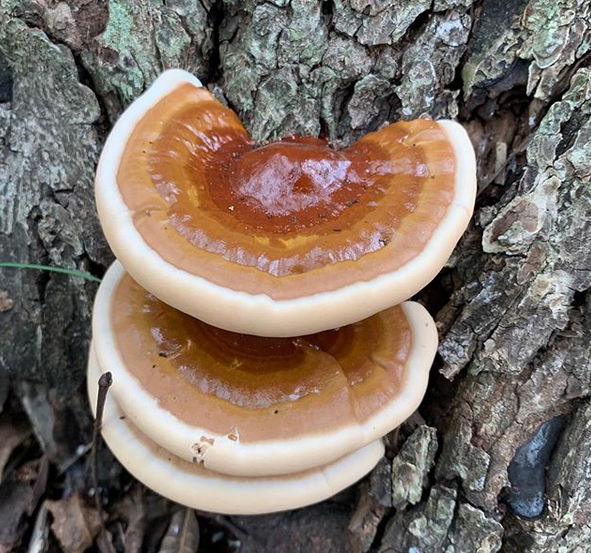
FUNGI: (40)
Hairy Hexagonia – Hexagonia hydnoides
False Turkey Tail – Stereum ostrea
Crowded Parchment Fungus – Stereum complicatum
Bracket Fungus – Ganoderma sessile
Bracket Fungus – Trametes lactinea
Oak Bracket – Pseudoinonotus dryadeus
Turkey Tail Fungus – Trametes versicolor
Mustard Yellow Polypore – Fuscoparia gilva
Hypoxylon Canker – Biscogniauxia atropunctata
Common Tarcrust – Diatrype stigma
Ceramic Parchment fungus – Xylobolus frustulatus
Trichoderma sp.
Firerug Inkcap – Coprinellus domesticus
Splitgill Mushroom – Schizophyllum commune
Honeycomb Bracket fungus – Favolus brasiliensis
Reddening Lepiota – Leucogaricus americanus
Red Russula – Russula sp.
Russula cerolens
Green-spored Parasol – Chlorophyllum molybdites
Grisette – Amanita vaginata
Wood Ear Fungus – Auricularia sp.
Peeling Oysterling – Crepidotus mollis
Golden-haired Inkcap – Parasola auricorna
Trooping Crumblecap – Coprinellus disseminates
Bolete – Hortiboletus sp.
Deer Mushroom – Pluteus sp.
Golden Chanterelle – Cantahrellus sp.
Unknown mushroom #1 – Myceana sp.
Unknown mushroom #2 – ?
Pore lichen – Pertusaria sp.
Rough-speckled Shield Lichen – Punctelia rudecta
Powdered Ruffle Lichen – Parmotrema hypotropum
Common Greenshield Lichen – Flavoparmelia caperata
Whitewash Lichen – Phlyctis argena
Sinewed Bushy Lichen – Ramalina americana
Cartilage Lichen – Ramalina celastri
Perforated Ruffle Lichen – Parmotrema perforatum
Bristly Beard Lichen – Usnea hirta
Lichen – Dirinaria sp.
Unknown lichen #1
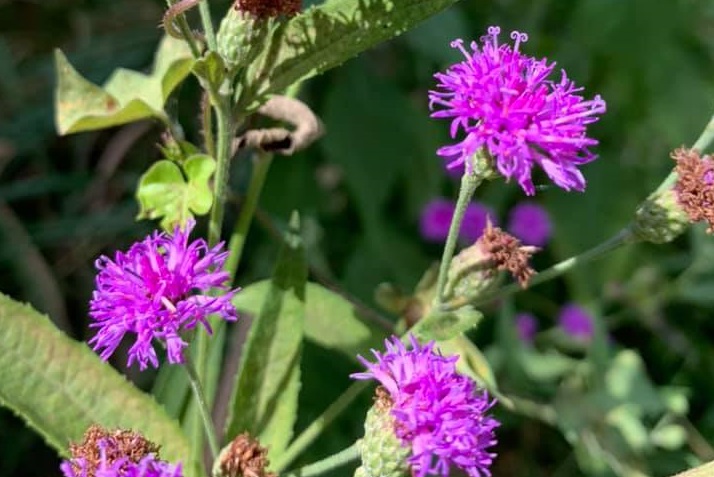
PLANTS: (152)
There are of course way more than ___ plants in Russ Pitman Park.
The Nature Discovery Center, however, already has a rather voluminous and exhaustive plant list for the park. Thus, the naturalists who participated in the first Bio-blitz did not attempt to document all or even most of the plants in the park. Participants simply noted plants they found interesting, observed fruiting or blooming, or thought may not already be on the official park list of plants.
During future Bio-blitzes, we will invite plant specialists to help us survey more systematically, for a more thorough accounting of plants present in the park.
Mosses: (1)
Unidentified moss sp.
Ferns: (3)
Resurrection Fern – Pleopeltis michauxiana
Japanese Climbing Fern – Lygodium japonicum
Southern Wood Fern – Dryopteris ludoviciana
Palms: (2)
Dwarf Palmetto – Sabal minor
Mexican Fan Palm – Washingtonia robusta
Grasses/Sedges/Rushes: (11)
Indiangrass – Sorghastrum nutans
Eastern Gamagrass – Tripsacum dactyloides
Basketgrass – Oplismenus hirtellus
Wood Oats (Inland Sea Oats) – Chasmanthium latifolium
Bermuda Grass – Cynodon dactylon
Big Bluestem – Andropogon gerardi
Hairy Crabgrass – Digitaria sanguinalis
Umbrella Papyrus – Cyperus involucratus
Cherokee Sedge – Carex cherokeensis
True sedge – Carex sp.
Deep-rooted Sedge – Cyperus enterianus
Broadleaf Plants: (135)
Mexican Plum – Prunus mexicanus
Boxelder Maple – Acer negundo
Red Maple – Acer rubrum
Southern Sugar Maple – Acer floridanum
American Sycamore – Platanus occidentalis
American Sweetgum – Liquidambar occidentalis
Chinese Privet – Ligustrum sinense
Tree Privet – Ligustrum lucidum
Ornamental Pear – Pyrus sp.
Black Willow – Salix nigra
Gum Bumelia – Sideroxylon langunosum
River Birch – Betula nigra
Sweetbay Magnolia – Magnolia virginiana
Southern Magnolia – Magnolia grandiflora
Sugar Hackberry – Celtis laevigata
Green Ash – Fraxinus pennsylvanica
Red Mulberry – Morus rubra
Chinese Mulberry – Morus alba
Shummard Red Oak – Quercus shumardii
Southern Live Oak – Quercus virginiana
Loquat-leaf Oak – Quercus rysophylla
Bur Oak – Quercus macrocarpa
Swamp Chestnut Oak – Quercus michauxii
Live Oak – Quercus virginiana
Willow Oak – Quercus phellos
Water Oak – Quercus nigra
Bald Cypress – Taxodium distichum
Loblolly Pine – Pinus taeda
Spruce Pine – Pinus glabra
Roughleaf Dogwood – Cornus drummondii
Eastern Redbud – Cercis canadensis
Carolina Laurelcherry – Prunus caronliniana
American Hornbeam – Carpinus caroliniana
Mexican Buckeye – Ungnadia speciosa
Osage Orange – Maclura pomifera
Orchid Tree – Bauhinia variegata
Shining Sumac – Rhus copallinum
Pecan – Carya illinoinensis
American Elm – Ulmus americana
Cedar Elm – Ulmus crassifolia
Northern Catalpa – Catalpa speciose
Chinese Raintree – Koelrueteria elegans
American Basswood – Tilia Americana
Camphor Tree – Cinnamomum camphora
Coralberry – Symphoricarpos orbiculatus
False Indigo – Amorpha fruticosa
Senna sp.
Parsley Hawthorn – Crataegus marshallii
Yaupon Holly – Ilex vomitoria
Chinese Holly – Ilex cornuta
Possumhaw Holly – Ilex decidua
American Black Elderberry – Sambucus canadensis
Southern Arrowwood – Viburnum dentatum
Buttonbush – Cephalanthus occidentalis
American Beautyberry – Callicarpa americana
Heavenly Bamboo – Nandina domestica
Common Lantana – Lantana camara
Texas Lantana – Lantana x urticoides
Straggler Daisy – Calyptocarpus vialis
Texas Frogfruit – Phyla nodiflora
Yard Aster – Symphotrichum divaricatum
Panicled Aster – Symphotrichum lanceolatum
Blue Mistflower – Conoclinium coelestinum
Tall Goldenrod – Solidago altissima
Seaside Goldenrod – Solidago sempervirens
Giant Goldenrod – Solidago canadensis
Narrowleaf Sunflower – Helianthus angustifolius
Camphorweed – Pluchea camphorata
Opposite-leaf Spotflower – Acmella repens
Spiny Chloracantha – Chloracantha spinosa
Cuban Jute – Sida rhombifolia
Illinois Bundleflower – Desmanthus illinoensis
Chamberbitter – Phyllanthus urinaria
Leafy Elephant’s-foot – Elephantopus carolinianus
Frostweed – Verbesina virginica
Missouri Ironweed – Vernonia missurica
Mexican Primrose-willow – Ludwigia octovalvis
Three-seeded Mercury – Acalypha sp.
Lizard’s Tail – Saururus cernuus
Obedient Plant – Physostegia virginiana
Brazos Penstemon – Penstemon tenuis
Hairy Crabweed – Fatoua villosa
Pickerelweed – Pontederia cordata
Rattlesnake Master – Eryngium yuccifolium
Cast Iron Plant – Aspidistra elatior
Monkey grass – Liriope sp.
Mexican Shrimp Plant – Justicia brandegeeana
Mexican Ruellia – Ruellia simplex
Wild Petunia – Ruellia caerula
Wedelia – Sphagneticola calendulacea
Turk’s Cap – Malvaviscus arboreus
Whitemouth Dayflower – Commelina erecta
Scarlet Sage – Salvia coccinea
Ball Moss – Tillandsia recurvata
Late Boneset – Eupatorium serotinum
Eastern False Aloe – Manfreda virginica
Narrowleaf Sunflower – Helianthus angustifolius
White Clover – Trifolium repens
Alligatorweed – Alternathera philoxeroides
Swamp Criunum – Crinum sp.
Spotted Spurge – Euphorbia maculata
Graceful Spurge – Euphorbia hypericifolia
Painted Spurge – Euphorbia heterophylla
Oriental False Hawk’sbeard – Youngia japonica
Sensitive Plants – Mimosa strigillosa.
Mock Strawberry – Potentilla indica
Carolina Ponysfoot – Dichondra carolinensis
Largeleaf Pennywort – Hydrocotyle bonariensis
Peruvian Lily – Alstroemeria aurea
Tahitian Bridalveil – Gibasis pellucida
Blue Violet – Viola sororia
Shrubby Boneset – Ageratina havanensis
Aster – Boltonia sp.
Pitcher’s Leatherflower – Clematis pitcher
Swamp Leatherflower – Clematis crispa
Yellow Star Grass – Hypoxis hirsute
Mugwort – Artemisia sp.
Groundsel Tree – Baccharis halimifolia
Redbay – Persea borbonia
Climbing Hempvine – Mikania scandens
Tievine – Ipomoea cordatotriloba
Saltmarsh Morning-glory – Ipomoea sagittata
Mustang Grape – Vitis mustangensis
Muscadine Grape – Vitis rotundifolia
American Trumpetvine – Campsis radicans
Carolina Snailseed – Cocculus carolinus
Virginia Creeper – Parthenocissus quinquefolia
Poison Ivy – Toxicodendron redicans
Japanese Honeysuckle – Lonicera japonica
Saw Greenbriar – Smilax bona-nox
Cross Vine – Bignonia capreolata
Blackberry/Dewberry – Rubus sp.
Scarlet Creeper – Ipomoea hederifolia
Pepper Vine – Ampelopsis arborea
Catclaw Vine – Dolichandra unguis-cati


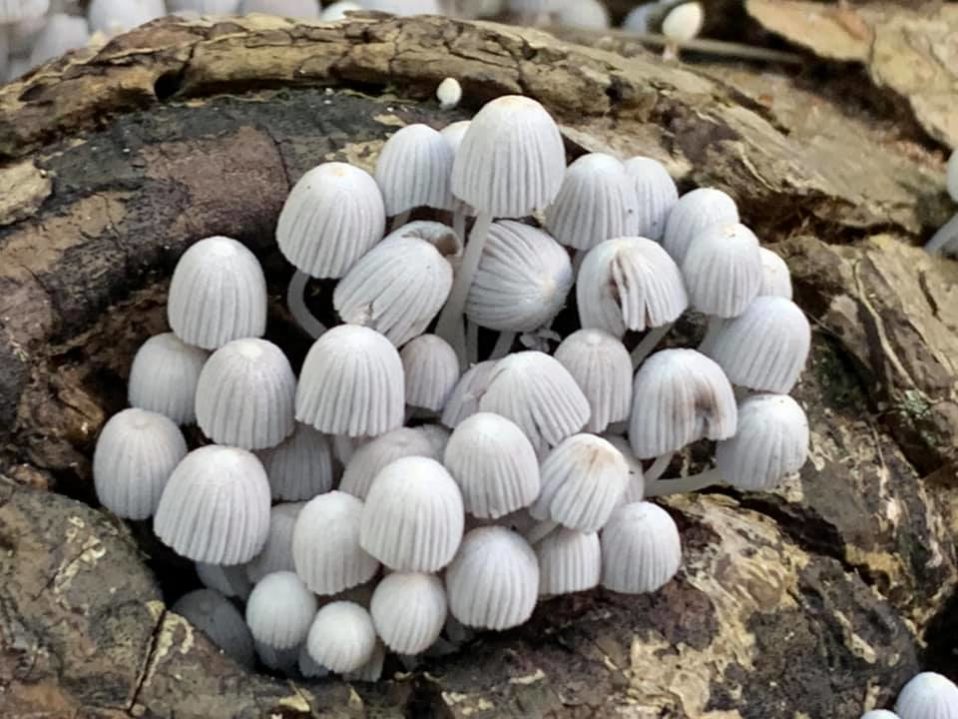
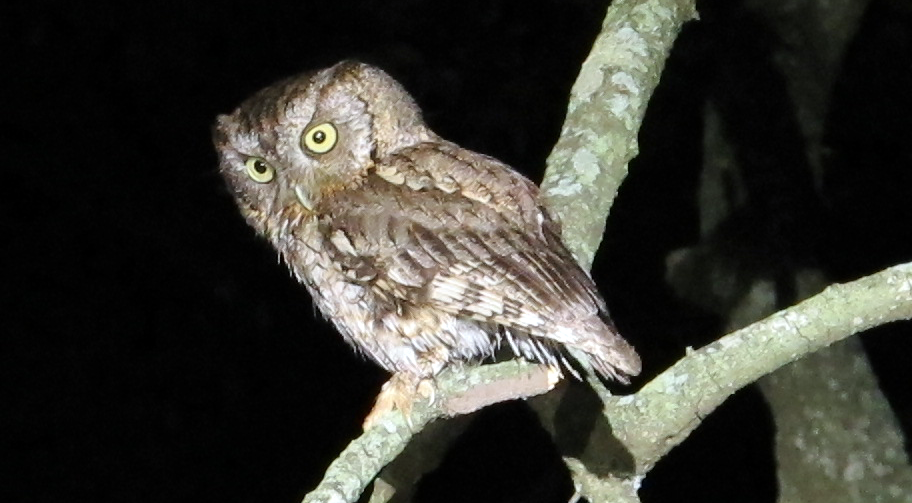
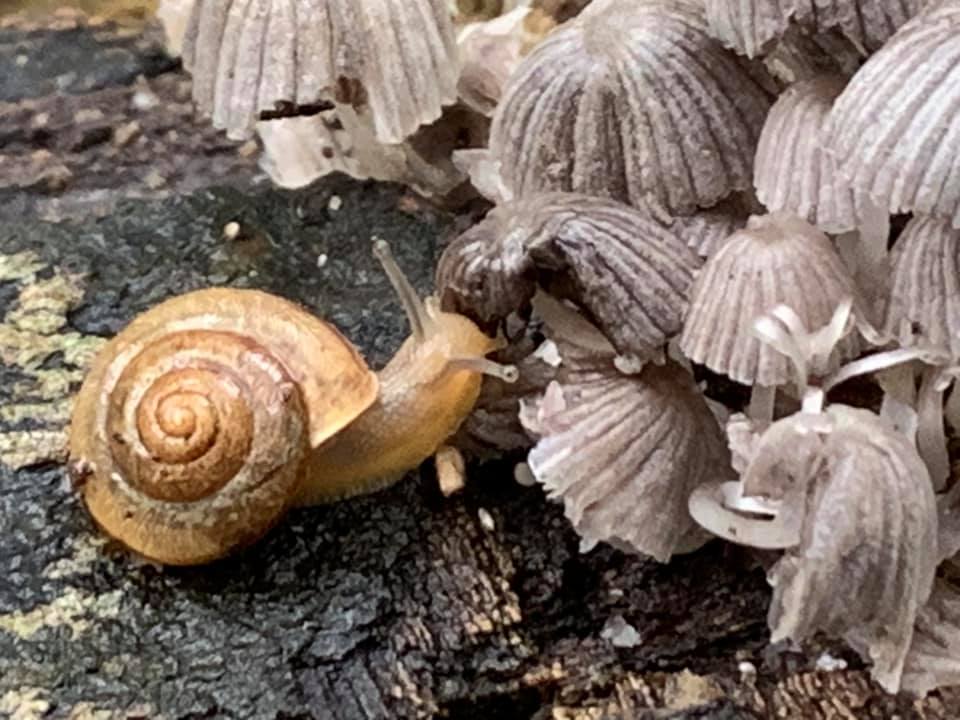
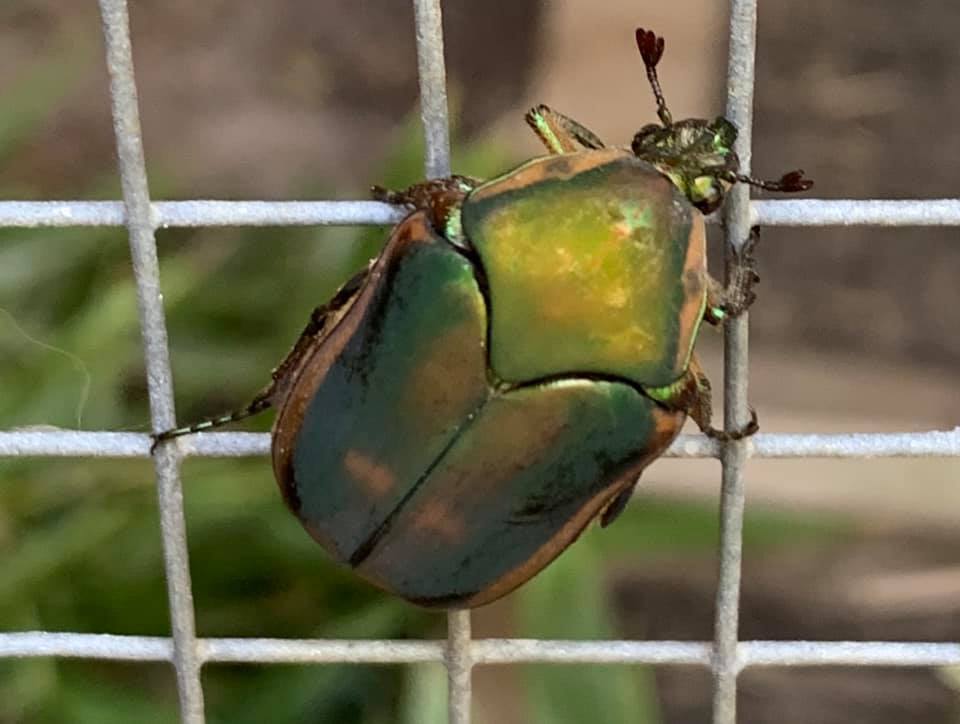
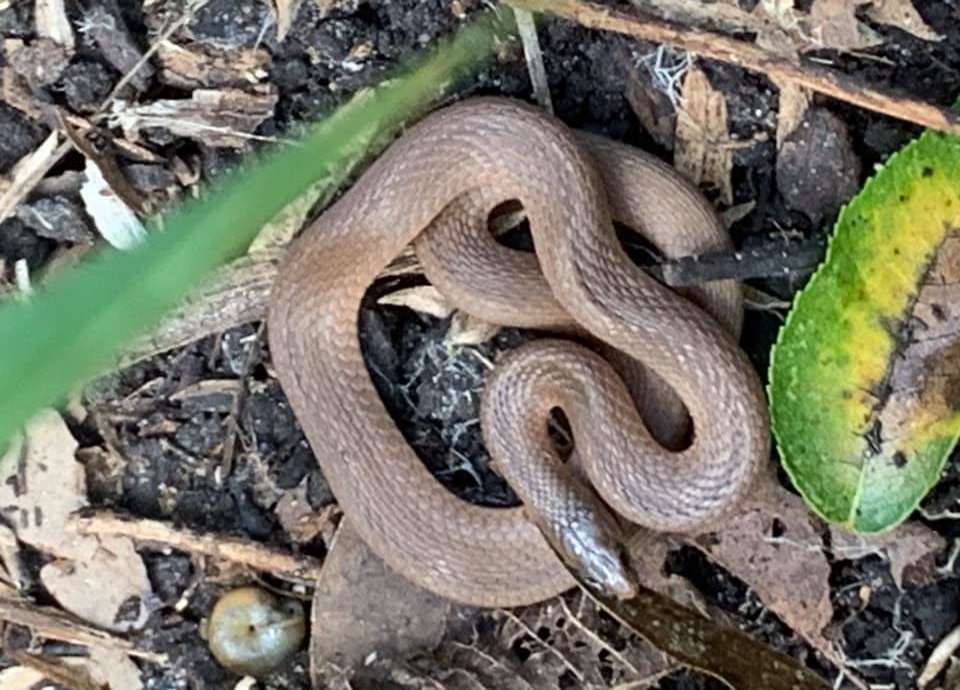
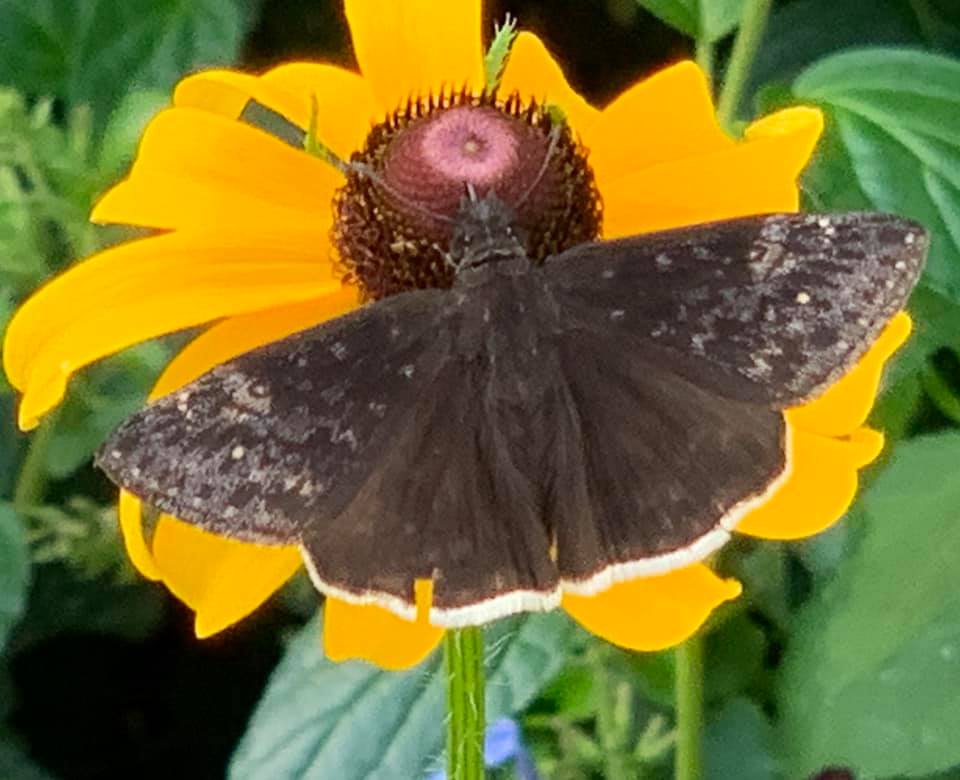
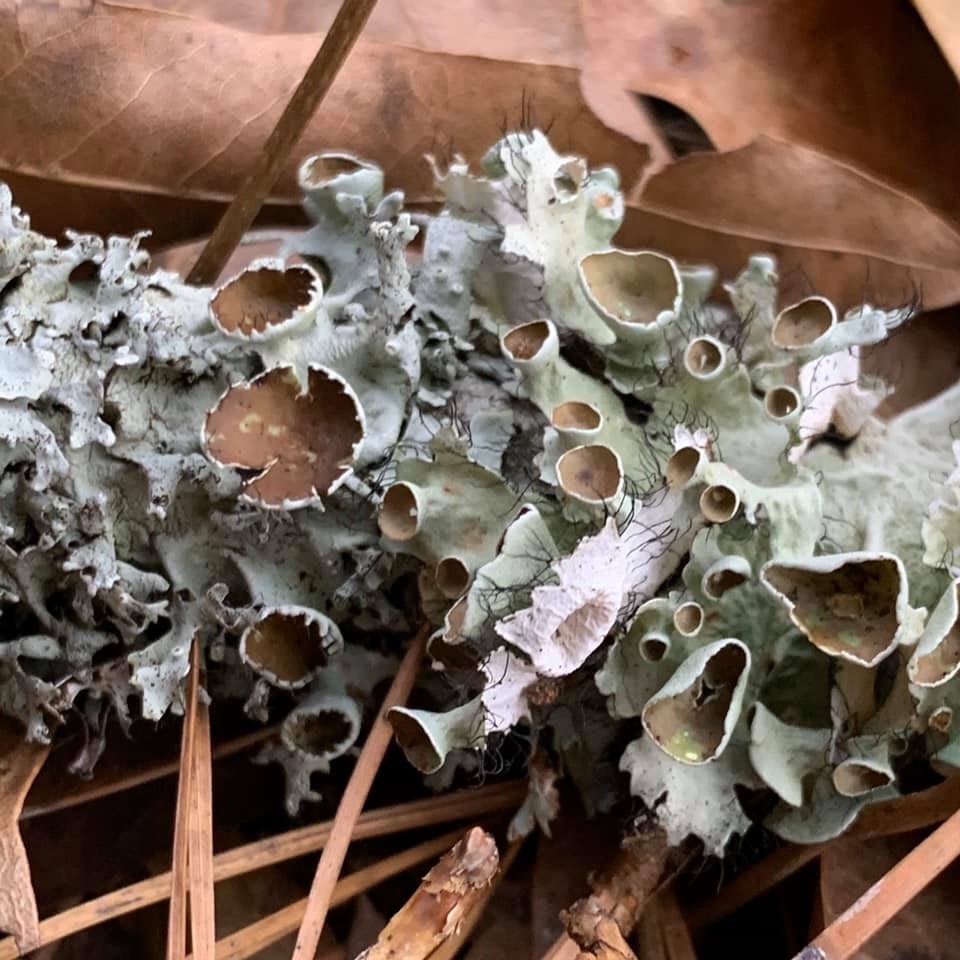
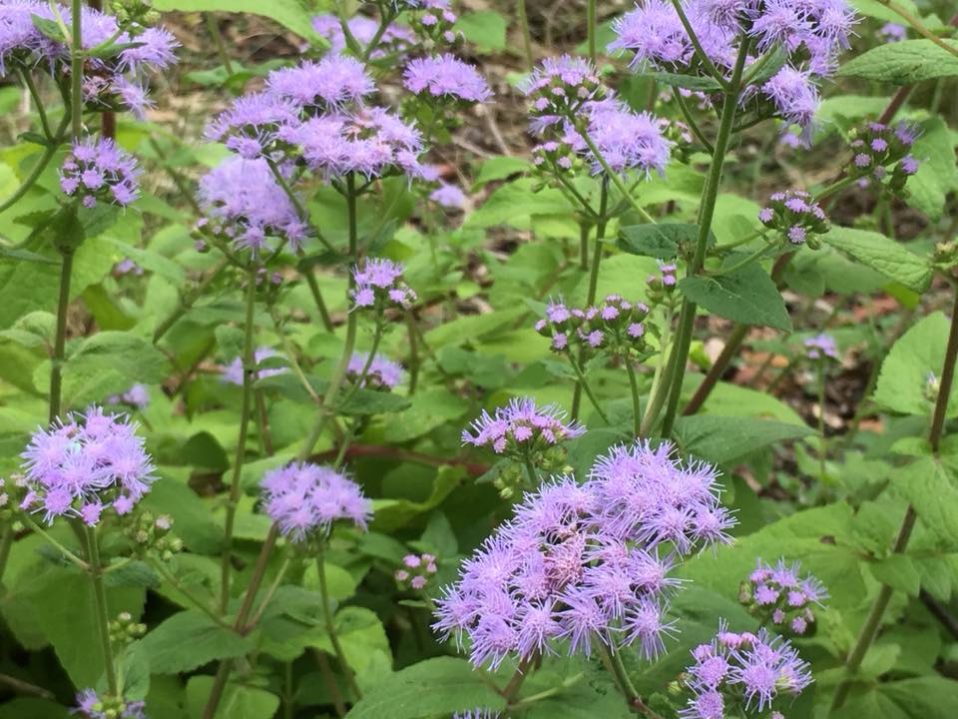
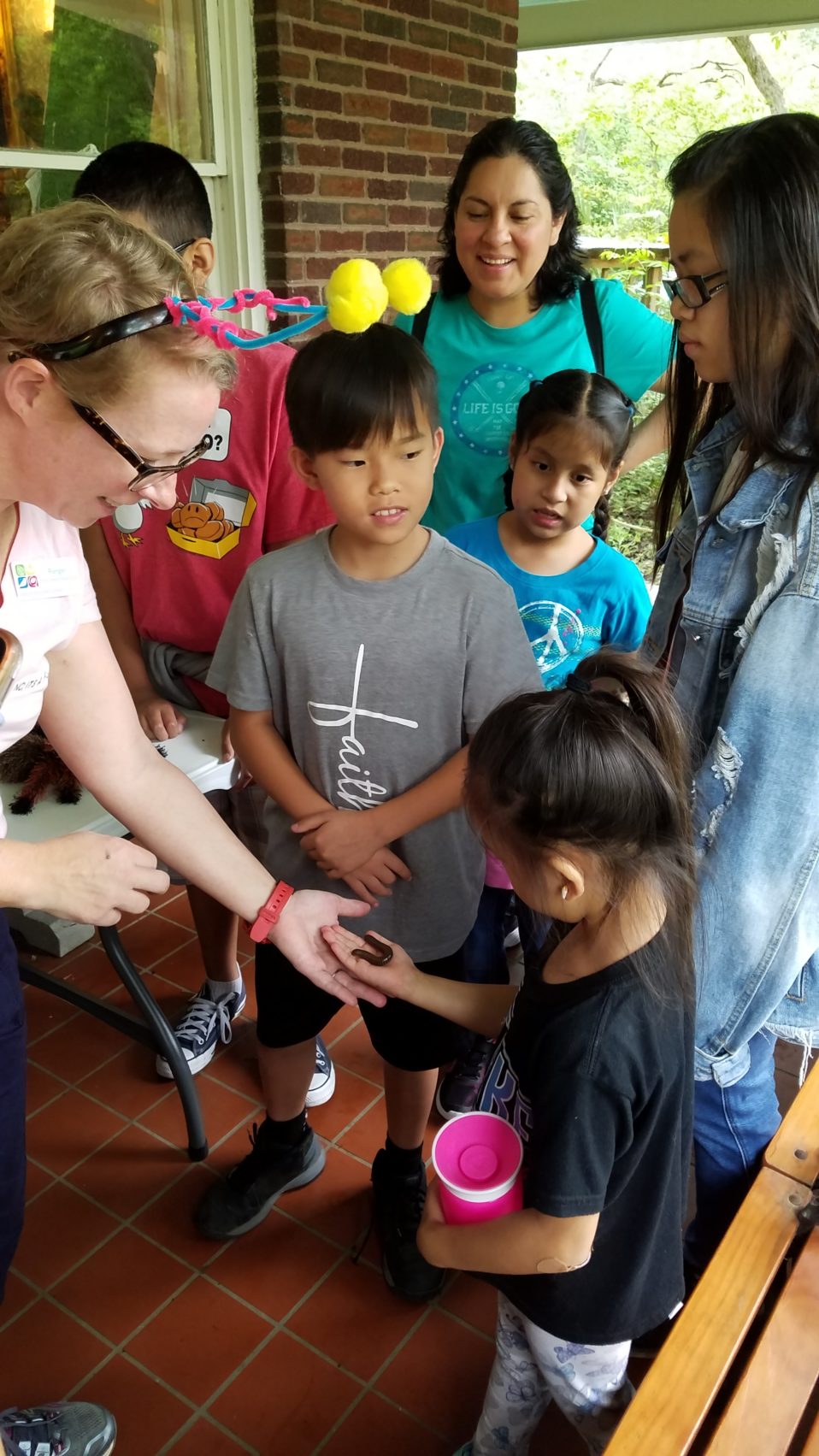
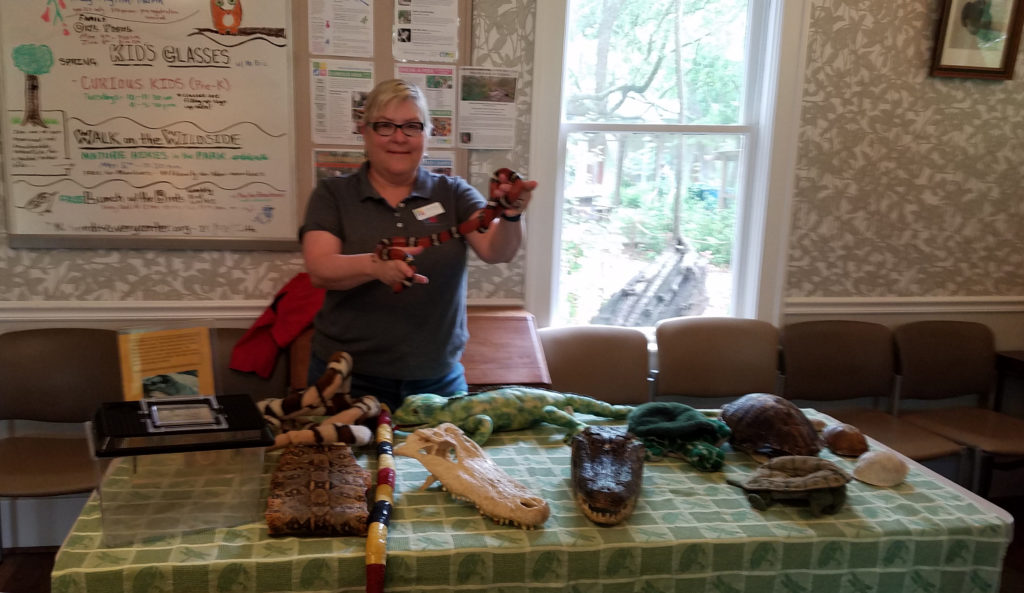
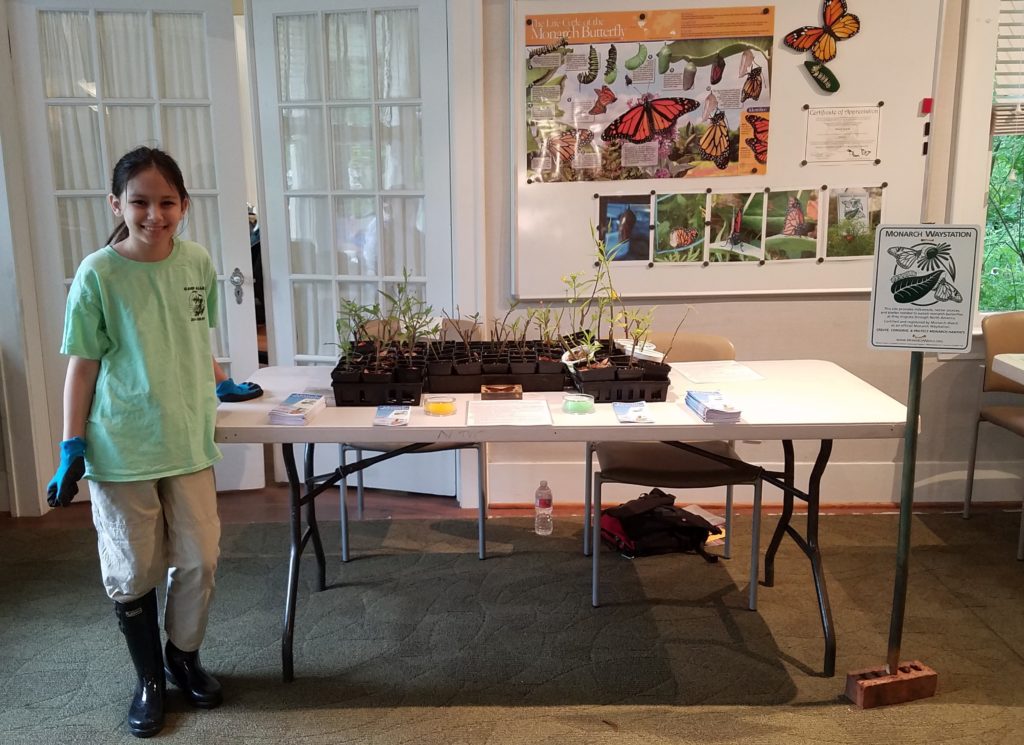
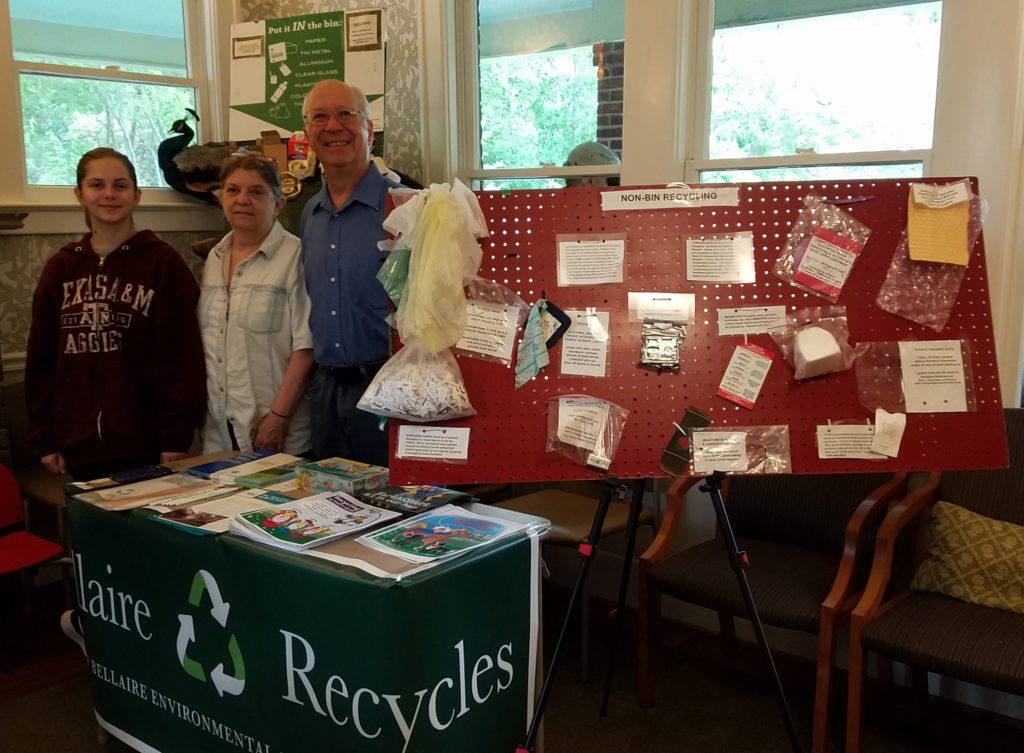
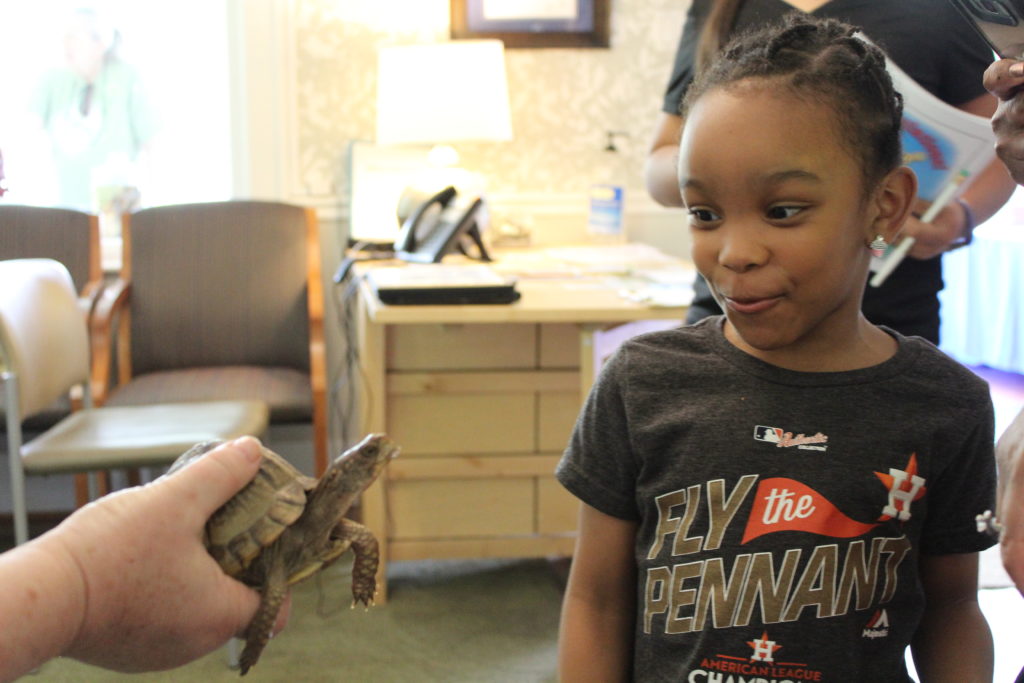
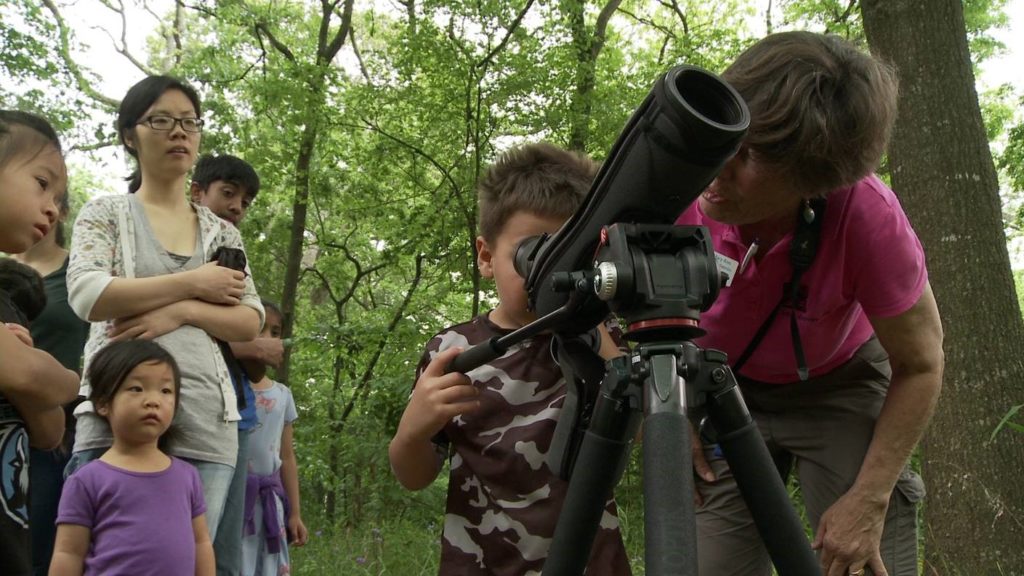
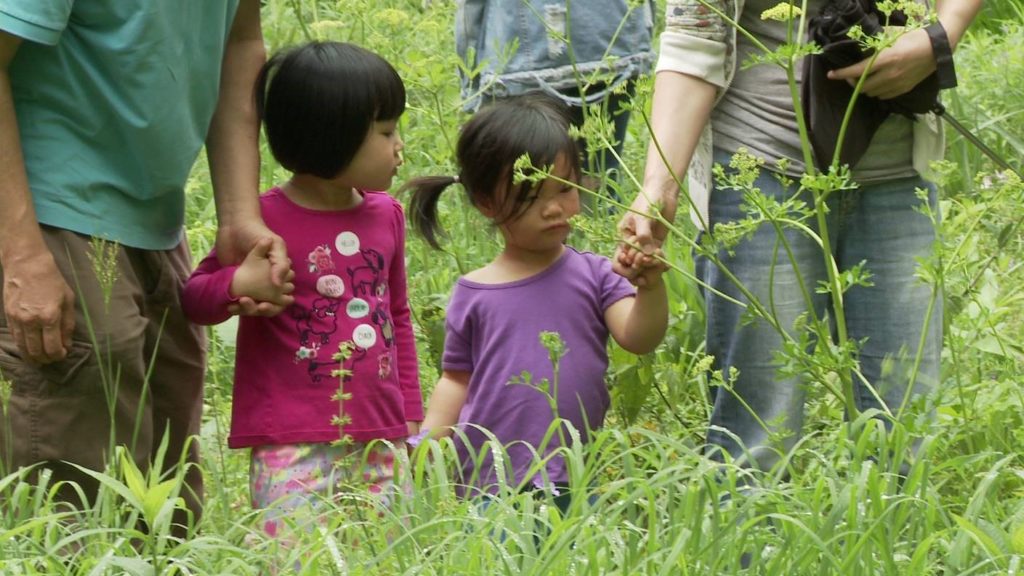
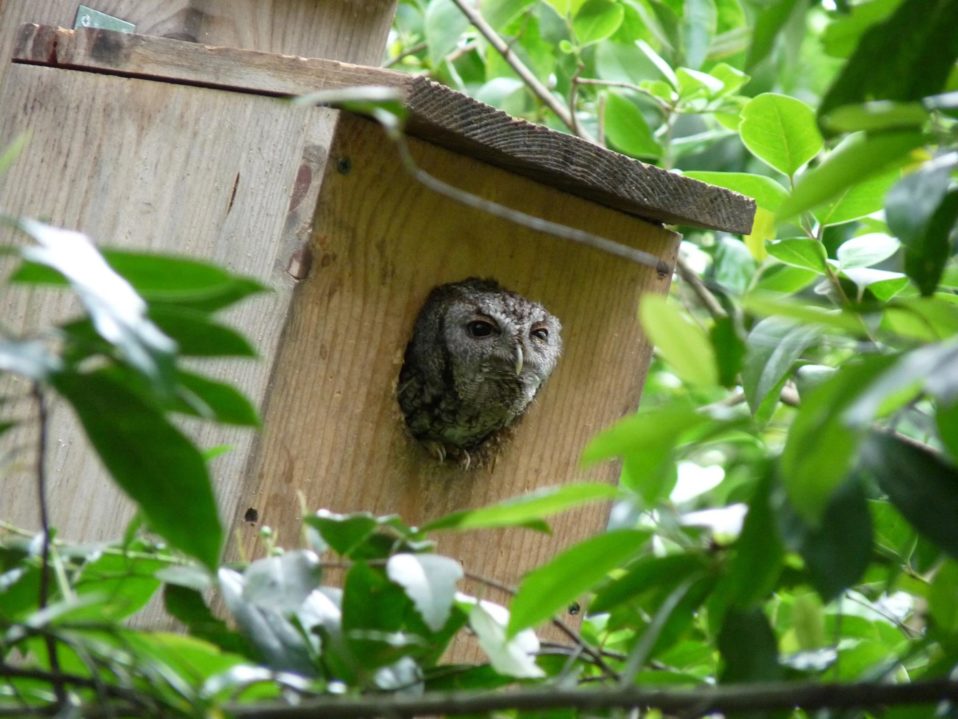
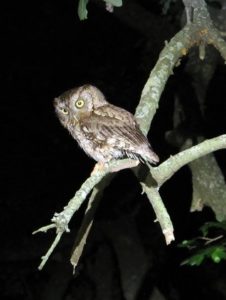 en we lead people through the park at night, the star of the show is usually the diminutive and active Eastern Screech Owl. Many visitors are enraptured, and tell us that it’s the first time they’ve seen an owl in the wild. In fact, most people don’t even know that we had owls here in Bellaire… that they had owls right in their own backyards.
en we lead people through the park at night, the star of the show is usually the diminutive and active Eastern Screech Owl. Many visitors are enraptured, and tell us that it’s the first time they’ve seen an owl in the wild. In fact, most people don’t even know that we had owls here in Bellaire… that they had owls right in their own backyards.

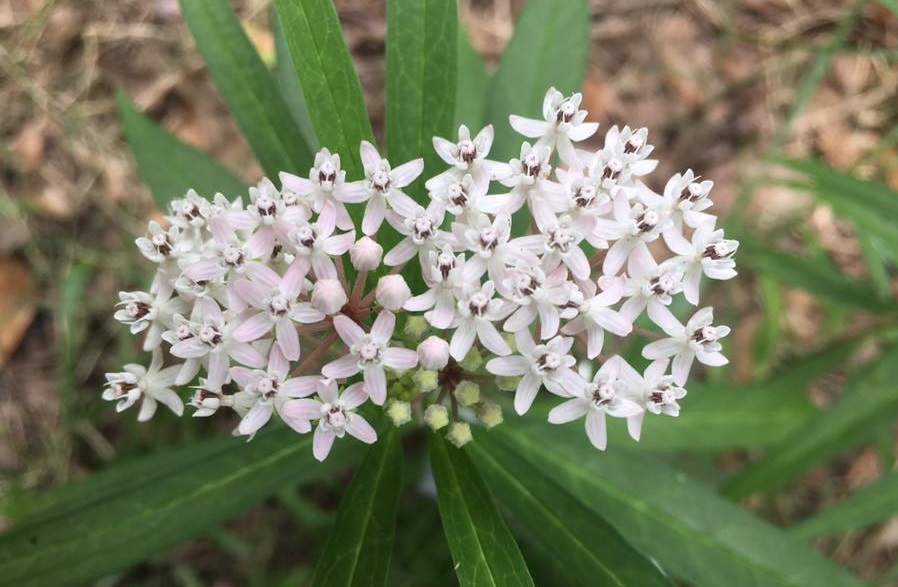
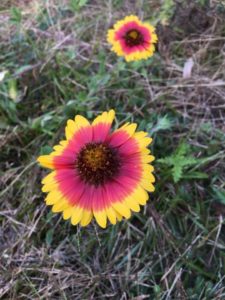 Gaillardia pulchella) aka Firewheel is a colorful relative of daisies and sunflowers. Popular with bees and butterflies, these showy flowers bloom from late February through December. The long blooming period of this annual, hardiness, and wide appeal to a variety of pollinators make it perfect for home gardens. They only grow 1 – 2 ft tall.
Gaillardia pulchella) aka Firewheel is a colorful relative of daisies and sunflowers. Popular with bees and butterflies, these showy flowers bloom from late February through December. The long blooming period of this annual, hardiness, and wide appeal to a variety of pollinators make it perfect for home gardens. They only grow 1 – 2 ft tall.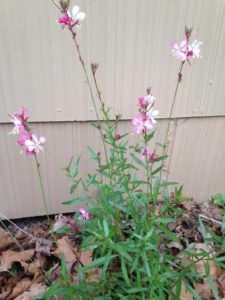
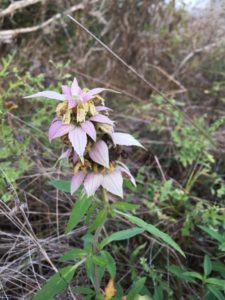 (Monarda punctata) are both very popular with large bees and butterflies, and they are gorgeous complex flowers. Beebalms grow from April – July. They’re in the mint family, and have a history of medicinal use. They are perennials, coming back from root stock the next season.
(Monarda punctata) are both very popular with large bees and butterflies, and they are gorgeous complex flowers. Beebalms grow from April – July. They’re in the mint family, and have a history of medicinal use. They are perennials, coming back from root stock the next season.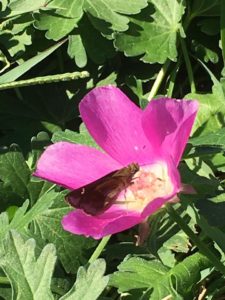
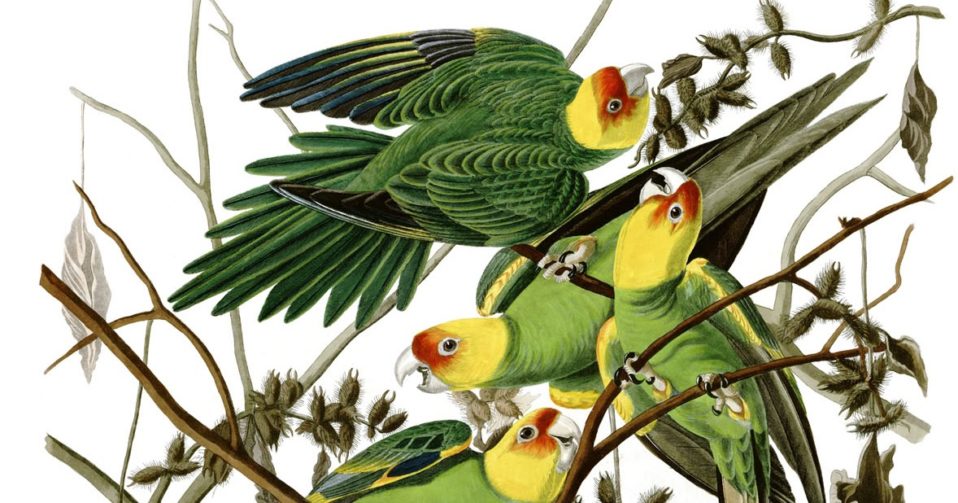
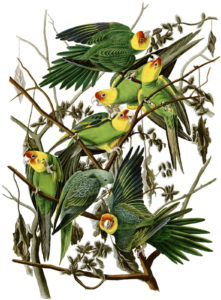 At one time, believe it or not, we had a common and colorful parrot, found across the central and Eastern United States, ranging from Southern New England, west to Colorado, and south to Texas along the Gulf Coast to the tip of Florida. The Carolina Parakeet (Conuropsis carolinensis) could be found in temperate and sub-tropical areas of the country, and was the Northernmost parrot in the Americas. They ate mostly large seeds and small fruits. Its thought that their habit of eating poisonous cocklebur seeds may have made the birds themselves poisonous, protecting them from predators. These parakeets were gregarious, living in groups of 200-300 birds. They nested in old hollow trees, using species such as Sycamore and Bald Cypress, in old growth forests, along the edges of wetlands.
At one time, believe it or not, we had a common and colorful parrot, found across the central and Eastern United States, ranging from Southern New England, west to Colorado, and south to Texas along the Gulf Coast to the tip of Florida. The Carolina Parakeet (Conuropsis carolinensis) could be found in temperate and sub-tropical areas of the country, and was the Northernmost parrot in the Americas. They ate mostly large seeds and small fruits. Its thought that their habit of eating poisonous cocklebur seeds may have made the birds themselves poisonous, protecting them from predators. These parakeets were gregarious, living in groups of 200-300 birds. They nested in old hollow trees, using species such as Sycamore and Bald Cypress, in old growth forests, along the edges of wetlands. 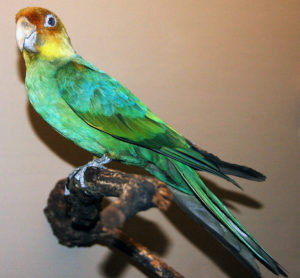
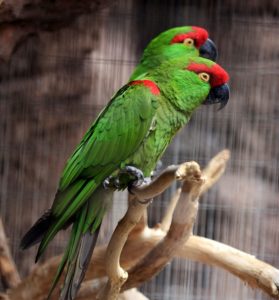
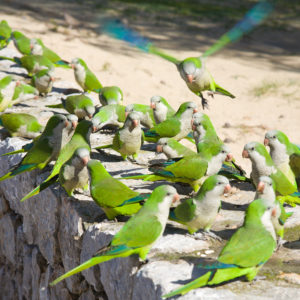
 Besides Monk Parakeets, and the occasional escaped Budgie, released Red-masked parakeets live in San Francisco, and various species of Amazon parrots live in South Texas and Southern Florida. Red-crowned parrots and Green Parakeets nest in the most Southern parts of the Rio Grande Valley of Texas, though its not clear if they are released pets, or whether Mexican populations have begun to creep slowly into the U.S.
Besides Monk Parakeets, and the occasional escaped Budgie, released Red-masked parakeets live in San Francisco, and various species of Amazon parrots live in South Texas and Southern Florida. Red-crowned parrots and Green Parakeets nest in the most Southern parts of the Rio Grande Valley of Texas, though its not clear if they are released pets, or whether Mexican populations have begun to creep slowly into the U.S.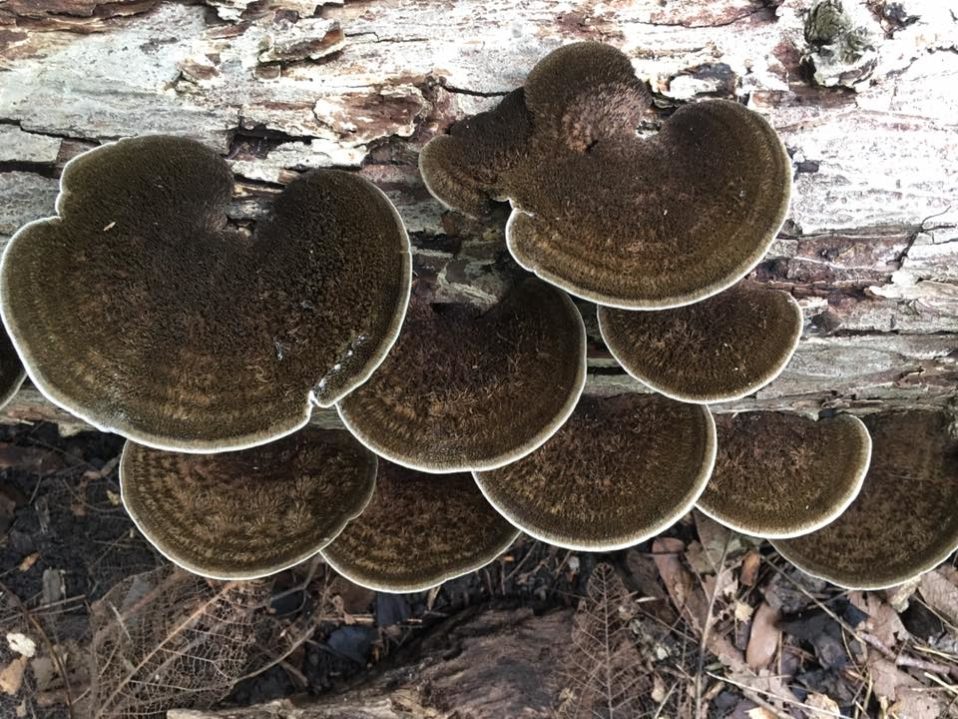
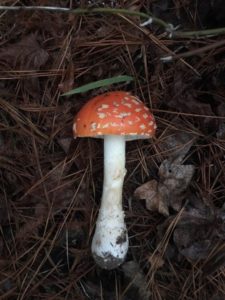 The bright red Fly Agaric (Amanita muscaria) is perhaps the most iconic of mushrooms. Ask a lot of people to draw a mushroom, and this is the species that may come to mind, though not everyone may know the name. This mushroom is famously hallucinogenic, but can also be somewhat toxic (so I would avoid consuming it). The name comes from the old practice of using this mushroom to ward off flies. Fly agarics are symbiotic with pine trees, and have a wide range across the Northern Hemisphere. One of the varieties that grows in our Texas pine forests may be a pale yellow.
The bright red Fly Agaric (Amanita muscaria) is perhaps the most iconic of mushrooms. Ask a lot of people to draw a mushroom, and this is the species that may come to mind, though not everyone may know the name. This mushroom is famously hallucinogenic, but can also be somewhat toxic (so I would avoid consuming it). The name comes from the old practice of using this mushroom to ward off flies. Fly agarics are symbiotic with pine trees, and have a wide range across the Northern Hemisphere. One of the varieties that grows in our Texas pine forests may be a pale yellow.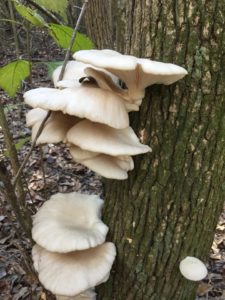
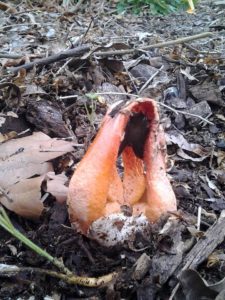 A rather strange looking mushroom that may pop up in your yard is the Columnar Stinkhorn (Linderia columnatus). They usually grow from soil with a lot of dead organic matter or hardwood mulch, so they’re usually seen in flower and landscaping beds. Besides the distinctive white egg like structure from which they seem to emerge, the spongy orange squid like tentacles, joined at the top, are rather unique. When the mushroom forms its slimy dark green spore mass inside the columnar arms, it takes on a nasty odor, reminiscent of feces and rotting carcass. The various species of stinkhorn fungi (ie. Columnar, Lattice, and stinky squid) attract flies with these odors to spread their spores to new locations.
A rather strange looking mushroom that may pop up in your yard is the Columnar Stinkhorn (Linderia columnatus). They usually grow from soil with a lot of dead organic matter or hardwood mulch, so they’re usually seen in flower and landscaping beds. Besides the distinctive white egg like structure from which they seem to emerge, the spongy orange squid like tentacles, joined at the top, are rather unique. When the mushroom forms its slimy dark green spore mass inside the columnar arms, it takes on a nasty odor, reminiscent of feces and rotting carcass. The various species of stinkhorn fungi (ie. Columnar, Lattice, and stinky squid) attract flies with these odors to spread their spores to new locations.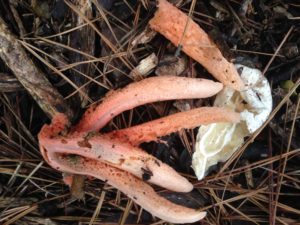
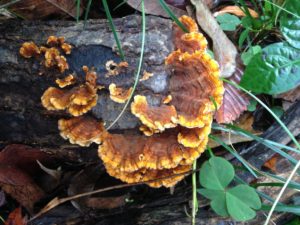
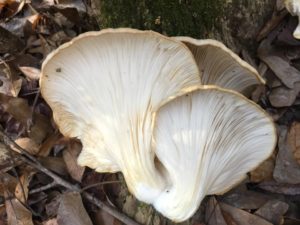
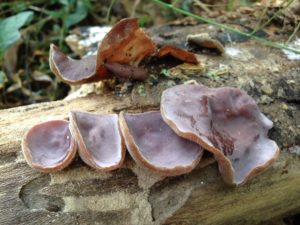

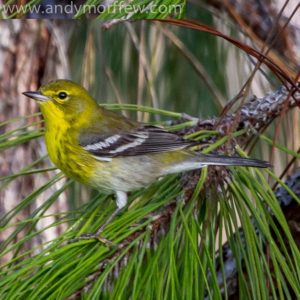
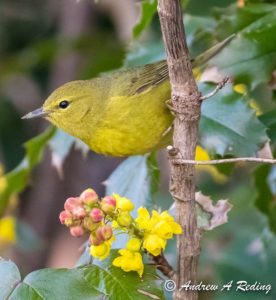
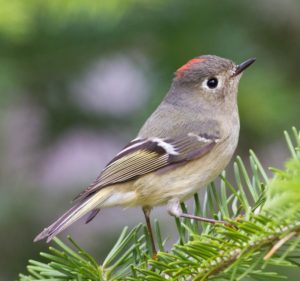
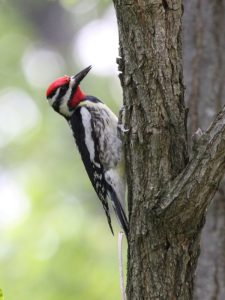
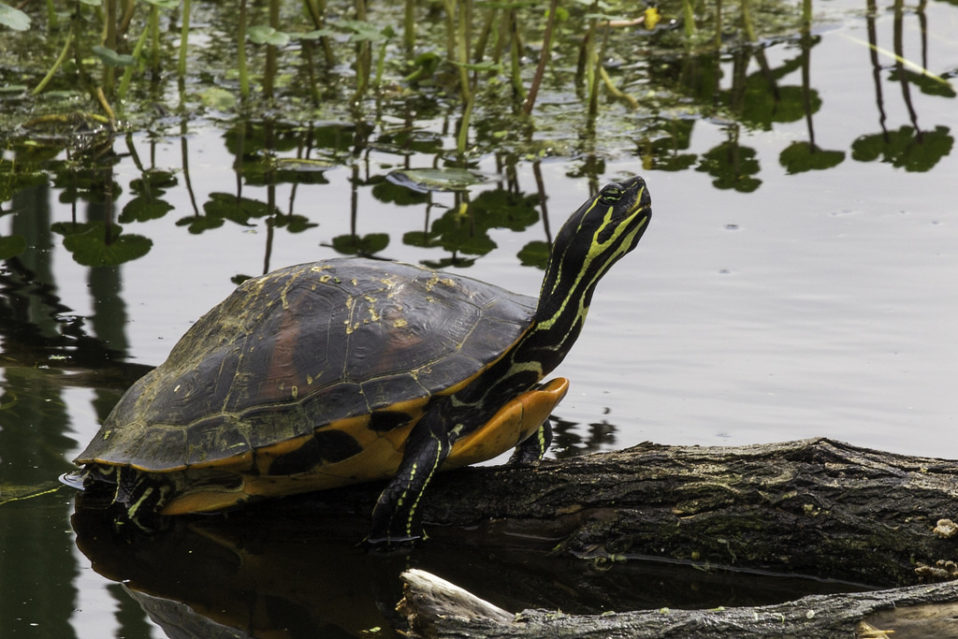
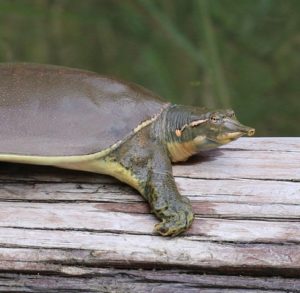
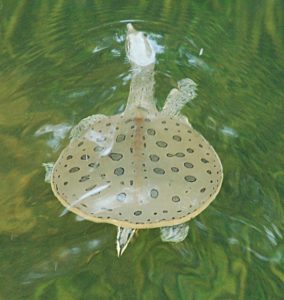

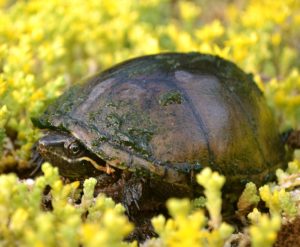
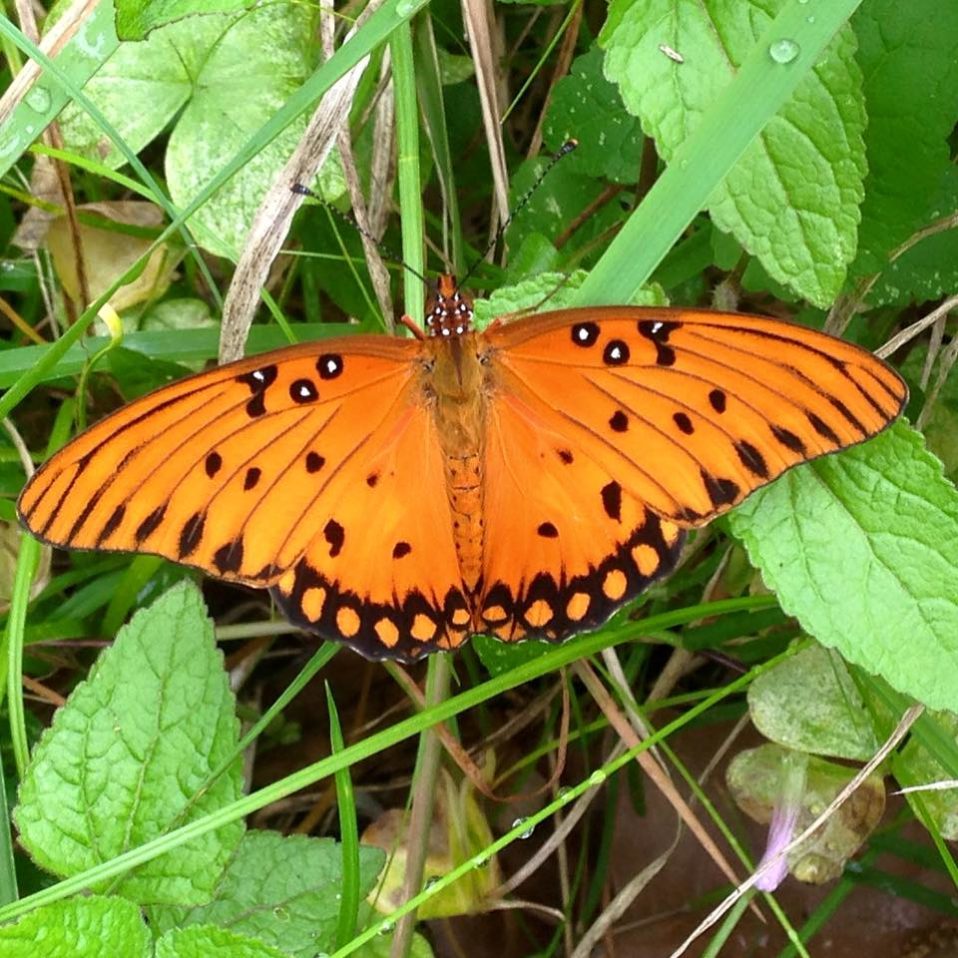
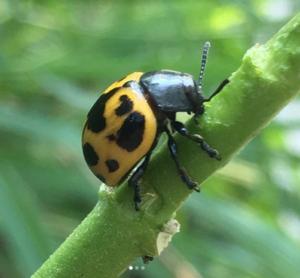 Most people who grow Mexican Milkweed in their gardens expect Monarch Butterflies, and even the tiny yellow milkweed aphids, on their milkweed plants, but we were surprised to notice, a couple of years ago, that our herb garden milkweed had also attracted bright yellow and black Milkweed Leaf Beetles (Labidomera clivicollis). Like monarch caterpillars, these round conspicuous beetles feed on the poisonous leaves of the milkweed, and are therefore toxic to predators, as well. The
Most people who grow Mexican Milkweed in their gardens expect Monarch Butterflies, and even the tiny yellow milkweed aphids, on their milkweed plants, but we were surprised to notice, a couple of years ago, that our herb garden milkweed had also attracted bright yellow and black Milkweed Leaf Beetles (Labidomera clivicollis). Like monarch caterpillars, these round conspicuous beetles feed on the poisonous leaves of the milkweed, and are therefore toxic to predators, as well. The 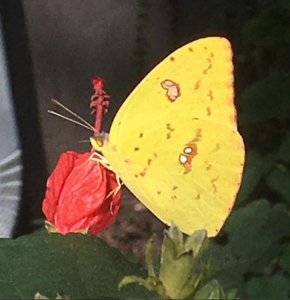 beetles come on black and yellow, black and red, and black and orange.
beetles come on black and yellow, black and red, and black and orange.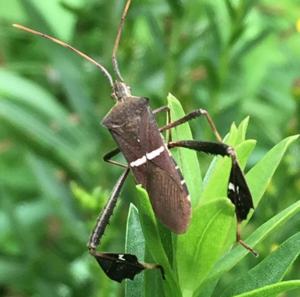 stern Leaf-footed Bugs (Leptoglossus phyllopus) are one of 3 common leaf-footed bugs that are found in our park throughout the year. We’ve seen the adults, and the red wingless nymphs prowling around plants in the garden. They feed on plants by piercing them with a straw-like proboscis and sucking juices out of the plant. The inject chemicals into the plants to aid in feeding, and these secretions may be somewhat toxic to the plant. In small amounts, this isn’t harmful, but in large numbers may kill the plant.They are harmless to people, but they may release a foul smelling substance when bothered.
stern Leaf-footed Bugs (Leptoglossus phyllopus) are one of 3 common leaf-footed bugs that are found in our park throughout the year. We’ve seen the adults, and the red wingless nymphs prowling around plants in the garden. They feed on plants by piercing them with a straw-like proboscis and sucking juices out of the plant. The inject chemicals into the plants to aid in feeding, and these secretions may be somewhat toxic to the plant. In small amounts, this isn’t harmful, but in large numbers may kill the plant.They are harmless to people, but they may release a foul smelling substance when bothered.